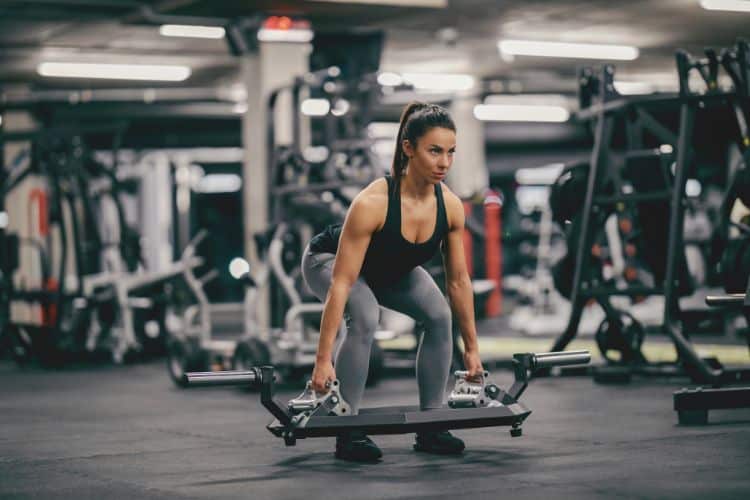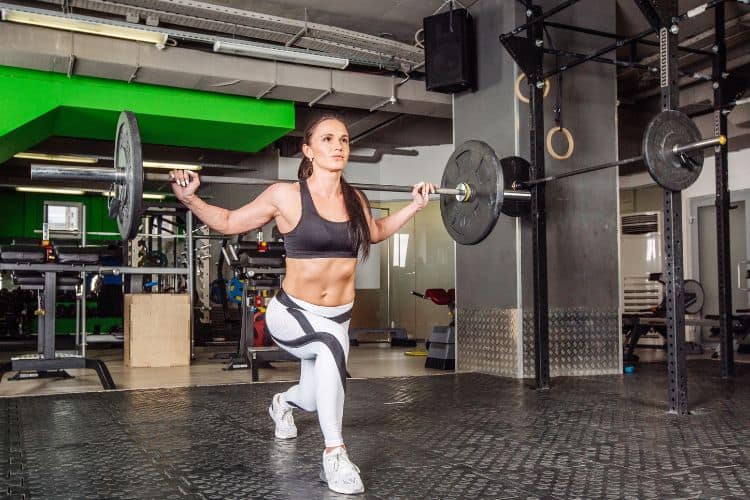Best Weightlifting Routine for Women: Beginner to Advanced
Weightlifting has long been associated with men, but today, more women are embracing it as a powerful tool for fitness, strength, and overall well-being. A structured weightlifting workout routine for women not only builds lean muscle but also supports fat loss, improves bone density, enhances posture, and boosts confidence. Whether you are a beginner stepping into the gym for the first time or an experienced lifter seeking progression, this guide provides everything you need to create a balanced and effective program.
Benefits of a Weightlifting Workout Routine For Women
Unlike steady-state cardio, weightlifting increases your metabolic rate, even after your workout is done. This phenomenon, known as excess post-exercise oxygen consumption (EPOC), means you continue burning calories long after leaving the gym.
Builds Lean Muscle and Tones the Body
One of the biggest myths is that lifting heavy weights will make women “bulky.” In reality, women typically lack the high testosterone levels required to gain extreme muscle mass. Instead, weightlifting sculpts and tones the body, creating a lean, athletic appearance.
Strengthens Bones and Joints
Resistance training increases bone density, reducing the risk of osteoporosis as women age. It also strengthens ligaments and tendons, supporting joint health.
Improves Confidence and Mental Health
Beyond the physical, weightlifting empowers women mentally. Seeing progress in the gym translates to increased confidence, discipline, and reduced stress levels.
How to Structure a Weightlifting Workout Routine for Women
Frequency and Duration
A good starting point is 3–4 sessions per week, each lasting about 45–60 minutes. Beginners should prioritize full-body workouts, while more advanced lifters can use split routines (upper/lower body or push/pull/legs).
Core Principles
- Progressive Overload: Gradually increase weights, reps, or sets over time.
- Compound Movements: Prioritize big lifts such as squats, deadlifts, and presses.
- Rest and Recovery: Allow at least one rest day between intense lifting sessions.
Warm-Up Before Lifting
Every session should start with a 5–10 minute warm-up to prepare the body and reduce injury risk.
Dynamic Warm-Up Examples:
- Jumping jacks (2 minutes)
- Arm circles and shoulder rolls (30 seconds each)
- Bodyweight squats (10–15 reps)
- Walking lunges (10 per leg)
- Light cardio (treadmill, bike, or rowing machine)
Full-Body Weightlifting Workout Routine for Women
Below is a sample 3-day-per-week full-body routine, perfect for beginners and intermediates.
Day 1: Lower Body Focus
Squats (Barbell or Dumbbell)
- 4 sets of 8–10 reps
- Builds quads, glutes, and hamstrings
Romanian Deadlifts
- 3 sets of 10–12 reps
- Targets hamstrings and glutes while strengthening lower back
Hip Thrusts
- 4 sets of 12–15 reps
- Excellent for glute development
Walking Lunges
- 3 sets of 12 steps per leg
- Improves balance, coordination, and unilateral strength
Calf Raises
- 3 sets of 15–20 reps
- Strengthens calves and improves ankle stability
Day 2: Upper Body Push (Chest, Shoulders, Triceps) Weightlifting Workout Routine For Women
Bench Press (Barbell or Dumbbell)
- 4 sets of 8–10 reps
- Builds chest, shoulders, and triceps
Overhead Shoulder Press
- 3 sets of 10–12 reps
- Strengthens shoulders and upper chest
Incline Dumbbell Press
- 3 sets of 10–12 reps
- Focuses on upper chest
Lateral Raises
- 3 sets of 12–15 reps
- Shapes the shoulders and enhances definition
Triceps Dips
- 3 sets of 12–15 reps
- Builds lean tricep muscles
Day 3: Upper Body Pull (Back and Biceps) Weightlifting Workout Routine For Women
Deadlifts
- 4 sets of 6–8 reps
- Strengthens back, hamstrings, and glutes
Pull-Ups or Lat Pulldowns
- 3 sets of 8–12 reps
- Builds width in the back and strengthens biceps
Barbell Rows or Dumbbell Rows
- 3 sets of 10–12 reps
- Improves posture and back thickness
Face Pulls
- 3 sets of 12–15 reps
- Strengthens rear delts and upper back
Bicep Curls (Dumbbell or Barbell)
- 3 sets of 12–15 reps
- Tones and defines the arms
Progressive Overload: The Key to Growth
Weightlifting progress relies on gradually challenging your muscles. This can be done by:
- Adding more weight each week
- Increasing reps or sets
- Reducing rest periods
- Using advanced techniques like supersets or drop sets
Nutrition for Women Weightlifting Routine
Protein for Muscle Repair
Aim for 0.8–1 gram of protein per pound of bodyweight daily. Good sources include chicken, eggs, Greek yogurt, beans, and protein shakes.
Carbohydrates for Energy
Carbs fuel lifting sessions. Choose complex carbs like oats, quinoa, and sweet potatoes.
Healthy Fats for Hormonal Health
Avocados, nuts, olive oil, and fatty fish help regulate hormones and aid recovery.
Hydration
Drink 2–3 liters of water per day, increasing intake on heavy lifting days.
Recovery and Rest For Weightlifting Workout Routine For Women
Sleep
7–9 hours of sleep per night is essential for muscle recovery.
Active Recovery
Light yoga, stretching, or walking can keep muscles loose and reduce soreness.
Rest Days
Incorporate 1–2 rest days per week to avoid overtraining.
Tips for Women Beginning Weightlifting Routine
Proper technique prevents injuries and maximizes results.
Track Progress
Use a workout log or app to monitor weights, sets, and reps.
Don’t Fear Heavy Weights
Challenge yourself—strength builds confidence.
Mix It Up
Rotate exercises every 6–8 weeks to prevent plateaus.
Advanced Weightlifting Routine Split for Women
For women with at least 6–12 months of experience, a 4-day split routine offers more targeted training.
Day 1: Lower Body (Heavy)
- Squats, Deadlifts, Hip Thrusts, Walking Lunges
2: Upper Body Push
- Bench Press, Overhead Press, Incline Press, Triceps Extensions
3: Rest or Active Recovery
4: Lower Body (Glute & Hamstring Focus)
5: Upper Body Pull
- Pull-Ups, Rows, Face Pulls, Bicep Curls
6: Full Body Accessory Work or Conditioning
7: Rest
Common Mistakes Women Make in Weightlifting Routine
- Skipping Warm-Ups: Leads to injuries.
- Relying Only on Machines: Free weights engage stabilizers better.
- Avoiding Heavy Lifts: Prevents optimal strength gains.
- Not Tracking Nutrition: Muscle growth requires adequate protein and calories.
- Inconsistent Training: Consistency is more important than intensity.
Safety Tips For Weightlifting Workout Routine For Women
- Always use proper form before increasing weight.
- Invest in good shoes for stability.
- Consider working with a trainer initially.
- Listen to your body and avoid pushing through sharp pain.
Why Every Woman Should Have a Weightlifting Routine Plan
A weightlifting workout routine for women is not just about building muscle—it’s about strength, longevity, and empowerment. From toning the body to improving health and boosting self-esteem, the benefits are undeniable. By following a structured program, focusing on nutrition, and embracing progressive overload, women can unlock their true strength and transform their bodies and minds.
Most Recommended





